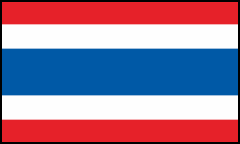For newly arrived accountants in Vietnam, local rules can be both familiar and a little disconcerting at first. Vietnam accountants use Vietnam Accounting Standards (VAS), which is relatively similar to IFRS, with many peculiarities. Assets accounts are part of these peculiarities in Vietnam.
Viettonkin Audit accompanies business with their accounting, in full compliance with Vietnamese regulations. In this article, we introduce you to the first accounts group in the balance sheet - Assets accounts.
This article is the first of series on Vietnam accounting. Subscribe to our newsletter to keep up to date with VAS requirements!
Assets accounts in Vietnam
There are two types in this group named Short-term Assets and Long-term Assets.
Short-term Assets
| Code |
Description |
| 111 |
Cash on hand |
| 112 |
Cash in banks |
| 113 |
Cash in transit |
| 121 |
Trading securities |
| 128 |
Held to maturity investment |
| 131 |
Trade receivables |
| 133 |
Deductible VAT |
| 136 |
Intra-company receivable |
| 138 |
Other receivables |
| 141 |
Advances |
| 151 |
Goods to transit |
| 152 |
Raw materials |
| 153 |
Tools and supplies |
| 154 |
Work in progress |
| 155 |
Finished goods |
| 156 |
Merchandise inventories |
| 157 |
Outward goods on consignment |
| 158 |
Goods in bonded warehouse |
| 161 |
Non-business expenditure out of funds received from the State |
| 171 |
Government bonds purchased for resale |
Long-term Assets
| Code |
Description |
| 211 |
Tangible fixed assets |
| 212 |
Finance lease fixed assets |
| 213 |
Intangible fixed assets |
| 214 |
Depreciation of fixed assets |
| 217 |
Investment properties |
| 221 |
Investment in subsidiaries |
| 222 |
Investment in joint ventures and associates |
| 228 |
Other investment |
| 229 |
Allowance for impairment of assets (credit balance) |
| 241 |
Construction in progress |
| 242 |
Prepaid expenses |
| 243 |
Deferred tax assets |
| 244 |
Mortgage, collaterals and deposits |
For more details, the chart of accounts made by KPMG is a great resource for comprehensive information on Vietnamese accounting.
Steps to review your Assets Accounts
Step 1: Check the Cash On Hand account (Code 111)
- Check your cash details book and make sure this account is not negative at any time.
- The ending balance checking must match the cash inventory record on December 31.
Step 2: Check the Cash In Bank account (Code 112)
- Get sub-books of all bank accounts that the company has opened.
- Reconcile the derived amount and the balance at each time between the bank sub-book and account details book of account 112 and make sure they match.
For foreign currency monetary accounts, conduct revaluation of monetary items denominated in foreign currencies.
- If interests arise from exchange rates, record: Debit of accounts 1122 (Foreign currencies), Credit in Account 4131 (Difference of exchange rate).
- If losses arise from exchange rates, record: Debit in Account 4131, Credit in Account 1122.
- Closing entry the interests from exchange rate in the revaluation at the end of the fiscal year into revenue from financial activities, record: Debit in Account 4131, Credit in Account 515 (Turnover from financial activities).
- Closing entry the losses from exchange rate in the revaluation at the end of the fiscal year into financial expenses from financial activities, record: Debit in Account 635 (Financial expenses), Credit 4131.
Step 3: Check the Trade Securities account (Code 121)
- At the end of the year, check the bonds and stocks and the balance of the company’s securities depository and make sure they match.
- Proceeding with the provision for securities investments. Revaluation of these investments at market prices at 31 December.
- Closing entry: Debit in Account 635, Credit in Account 2291.
Step 4: Check the Held To Maturity Investment (Code 128)
- Conduct the reconciliation of the company's loan with other entities.
- Make a calculation of loan interest by period and issue VAT invoices (without tax rate).
- Financial income recognition.
- Closing entry: Debit in Accounts 131,138,111,112, Credit in Account 515.
Step 5: Check the Trade Receivable account (Code 131)
- Conduct the reconciliation of debts with customers and company. Ensure that debts between the two parties match.
- Take a note for the case of customers having liabilities on the Balance sheet: Accounting for lack of revenue, if customers deposited, advance should be clearly shown in the contract, record of debt reconciliation.
- Provisions for the provision of doubtful debts as prescribed (if any).
- Closing entry: Debit in Account 642, Credit in Account 2293.
Step 6: Check the Deductible VAT account (Code 133)
This account only has the balance in the Debit, reflecting the deductible input tax amount refundable but the State budget has not yet returned it.
At the end of each declaration period (month, quarter), the accountant shall determine the input VAT amount to be deducted from the output VAT amount when determining the payable VAT amount in the period, and record: Debit in Account 3331 (Payable VAT), Credit 133 (Deductible VAT).
The balance of Account 133 (if any) on December 31 must match with the target 41 "VAT not yet deducted at the end of this period" on declaration form 01 / GTGT in December or Q4.
Step 7: Check the Advances account (Code 141)
- Conduct the reconciliation of advances for employees and ensure that the balance between the two parties match.
- Set up the advanced reserves in case employees have quit their jobs and cannot claim them.
Step 8: Check the Tools and Supplies account (Code 153)
- Inventory the actual number of tools and instruments against the books and make sure they match.
- Check the distribution of tools and instruments with the numbers recorded on the accounting books.
Step 9: Check the Inventory accounts (Code 151, 152, 154, 155, 156, 157)
This account just has the balance in Debit, reflecting the actual value of ending inventory.
- Make a list of the actual amount of inventory and make sure they match the numbers on the books.
- Check to see if the inventory is priced correctly (Commonly applicable method is a weighted average).
- Make provisions for devaluation of inventory in case there is a decrease in net realizable value compared to the cost of inventories.
- Closing entry: Debit in Account 632, Credit 2294.
Step 10: Check the Fix Assets and the Depreciation of Fixed Assets accounts (Code 211, 213, 214)
- Make a spreadsheet of fixed assets depreciation, fixed asset cards (fixed asset cards need accompanying documents: Sale and purchase contracts, documents on acceptance and handover, value added invoices and payment receipts);
- Compare the fixed asset depreciation spreadsheet with the arising amounts and balances of Accounts 211, 213 and 214.
Step 11: Check the Prepaid Expenses account (Code 242):
- Make a table of allocation of prepaid expenses.
- Compare the figures in this table with the derived amount and the balance of Accounts 242 and 153.
Want to know more about assets accounts peculiarities in Vietnam? Contact our experts at Viettonkin Accounting.
Tax Summary in Indonesia
1. Direct Tax - Corporate Income Tax
Residence. Non-resident companies are those which are incorporated overseas, but receive or accrue income from Indonesia. Non-residents are obliged to register for tax purposes if they have a permanent establishment (PE) in the country.
Representative Offices of foreign companies are required to register as taxpayers because they must withhold tax on payments to employees and third parties, and lodge relevant tax returns.
Basis. Non-residents are taxed on income sourced in Indonesia, including income attributable to a PE.
Losses. Losses can be carried forward for a period of five (05) years following the year of incurrence. Under special circumstances, this period may be extended up to ten (10) years. The carry back of losses is not permitted.
Rate. The standard corporate tax rate is 25%.
Withholding tax. Withholding tax is imposed at 20% on various amounts payable to non-residents (e.g. dividends, interest, royalties), unless the non-resident has a PE in Indonesia, in which case the rates applicable to payments to residents apply.
PEs of foreign enterprises are also subject to a 20% branch profits tax, which is imposed on their after-tax profits, unless reduced by a tax treaty.
Tax treaty provisions. The stated withholding tax rates might be reduced under a tax treaty. To qualify for relief under a relevant tax treaty, non-residents must provide a certificate from the tax authority in their country of residence.
Compliance. Companies are required to self-assess and lodge annual corporate income tax returns. The annual corporate tax returns must be lodged with the relevant Tax Office within 04 months after the end of the calendar year or tax year, which may be extended for 02 months by notifying the Director General of Taxation.
Indonesia has a ruling system in place, but tax rulings are not generally published, and are only applicable to the relevant taxpayer that requested such ruling.
2. Indirect Tax
Value-Added Tax (VAT). The standard VAT rate is 10%, which applies to goods, services and imports into Indonesia. Exports of goods are not subject to VAT, but only certain exports of services receive the same treatment, i.e. subcontracting services, repair and maintenance services attached to movable goods utilized outside of the Indonesian customs area, and construction services attached to immovable goods situated outside of the Indonesian customs area.
3. Tax Incentives
Tax incentives are available to entities with capital investments in certain industry sectors or those operating in certain geographic locations, if certain conditions are met. Incentives include a tax investment allowance, accelerated depreciation/amortization, an extended carry forward of losses and a reduced withholding rate on dividends paid to non-residents.
A public company with a minimum of 40% of total paid-up shares traded on the Indonesian stock exchange may be entitled to an income tax rate reduction of 5%, if certain conditions are met.
A tax holiday regime is available for new domestic or foreign investment in specified business sectors, but companies that use this regime are not entitled to the previously stated tax incentives.
Qualifying projects in high-priority sectors may be granted the following incentives:
- a 10% to 100% reduction in corporate income tax liability, for a minimum investment of IDR 1 trillion;
- up to a 50% corporate income tax reduction for taxpayers in the telecommunications, information and communication sectors that introduce high technology with a minimum investment value of IDR 500 billion, but less than IDR 1 trillion;
- a tax holiday period, from 05 to 15 years from the commencement of commercial operations.
Tax exemptions are available for certain transactions, e.g. merger and spin-off, and newly established foreign owned companies.
4. Merger and Acquisitions
Indonesian GAAP account for most combinations as acquisitions, whereas IFRS treat all business combinations as acquisitions.
Asset transfer. Indonesian regulations impose conditions on tax-neutral transfers of assets, where both parties must pass a business purpose test to ensure that the motivation of the merger or acquisition is not to avoid tax. When the transfer occurs within the context of business expansion, the transfer of assets is only recorded at book value if the transferor and/or acquirer are planning an initial public offering (IPO).
When an asset transfer at book value is approved, the acquirer should assume the asset history of the transferor. Approval is granted only when both parties have no outstanding tax assessments or unpaid tax balances. A number of other conditions must be met, or else the transfer of assets would be assessed at market value.
Loss transfer. Losses remain with the entity incurring them. If the acquired entity ceases to exist or becomes dormant after the acquisition, the tax losses within that entity becomes unavailable for relief against any further profits.
Share transfer tax. The transfer of the shares of an unlisted resident company by a non-resident shareholder is subject to a withholding tax of 5% of the transfer value, unless an exemption applies under a tax treaty. An independent appraisal report is required to demonstrate that the transaction value is an arm’s length price.
Share purchase or asset purchase. Most acquisitions in Indonesia take the form of a share purchase, due to both tax and commercial considerations.
The sale of shares listed on the Indonesian stock exchange is subject to a final tax of 0.1% of the transaction value (an additional tax of 0.5% applies to the share value of founder shares at the time of an IPO).
On the other hand, the transfer of titles to land and buildings under an asset purchase subjects the seller to a 5% final income tax and the acquirer to a 5% transfer of title tax, both of which may be entitled to relief under an approved merger or consolidation. The transfer of the trade and assets of a business is also subject to the standard VAT rate of 10%.
However, there are several benefits for the acquirer in a trade and asset acquisition, including reduced risk of inheriting tax history and liabilities, and amortization of goodwill being tax-deductible. Furthermore, sales of unlisted shares by a foreign company are subject to a final tax of 5% of gross proceeds, unless protected by a tax treaty. Thus, the seller is liable for the tax even when the shares are sold at a loss.
5. Indonesian Anti-Avoidance System
Thin Capitalization. Where a “special relationship” exists between parties, interest may be disallowed as a deduction where such changes are considered excessive. Interest-free loans from shareholders may, in certain cases, create a risk of deemed interest being imposed, giving rise to withholding tax obligations for the borrower.
A certain portion of interest arising from debt is nondeductible for tax purposes of the taxpayer’s debt-to-equity ratio exceeds 4:1, except for the mining and oil and gas sectors.
Controlled Foreign Company (CFC). A CFC is a foreign unlisted corporation in which an Indonesian resident individual or corporate shareholders hold 50% or more of the total paid in capital. The Indonesian shareholders shall be deemed to receive dividends:
- within 04 months after filing the tax return;
- or 07 months after the end of the fiscal year where there is no obligation to file an annual tax return, or if the country of residence does not have a specific tax filing deadline.
Transfer Pricing. Transactions between parties that have a special relationship must be commercially justifiable and on an arm’s length basis.
Director General of Taxes is authorized to reallocate income and deductions between related parties and to characterize debt as equity in taxable income calculations, in order to assure that the transactions are those which would have been made between independent parties.
If total transactions with a related party exceed IDR 10 billion, certain documentation is required which would include, for example, an overview of operations and structure, transfer pricing policy, a comparability analysis, and an explanation of arm’s length price or profit determination method.
Anti-stepping. A taxpayer who purchases shares or assets of another entity through a special purpose company can be deemed as the real party who conducts the transaction, if such taxpayer is the affiliation of the special purpose company and the price of the transaction is unfairly settled.
Anti-treaty shopping. Abuse of tax treaty occurs when (1) the transaction has no economic substance and is designed solely to benefit from the tax treaty; (2) the transaction has a structure or legal format in contrast to its economic substance, solely to benefit from the tax treaty; or (3) the income recipient is not the actual owner of the economic benefits of said income.
To utilize the tax treaty provisions, a non-resident must confirm in Form DGT-1 that the transaction has economic substance and is not solely designed to take advantage of a tax treaty.
 English
English






